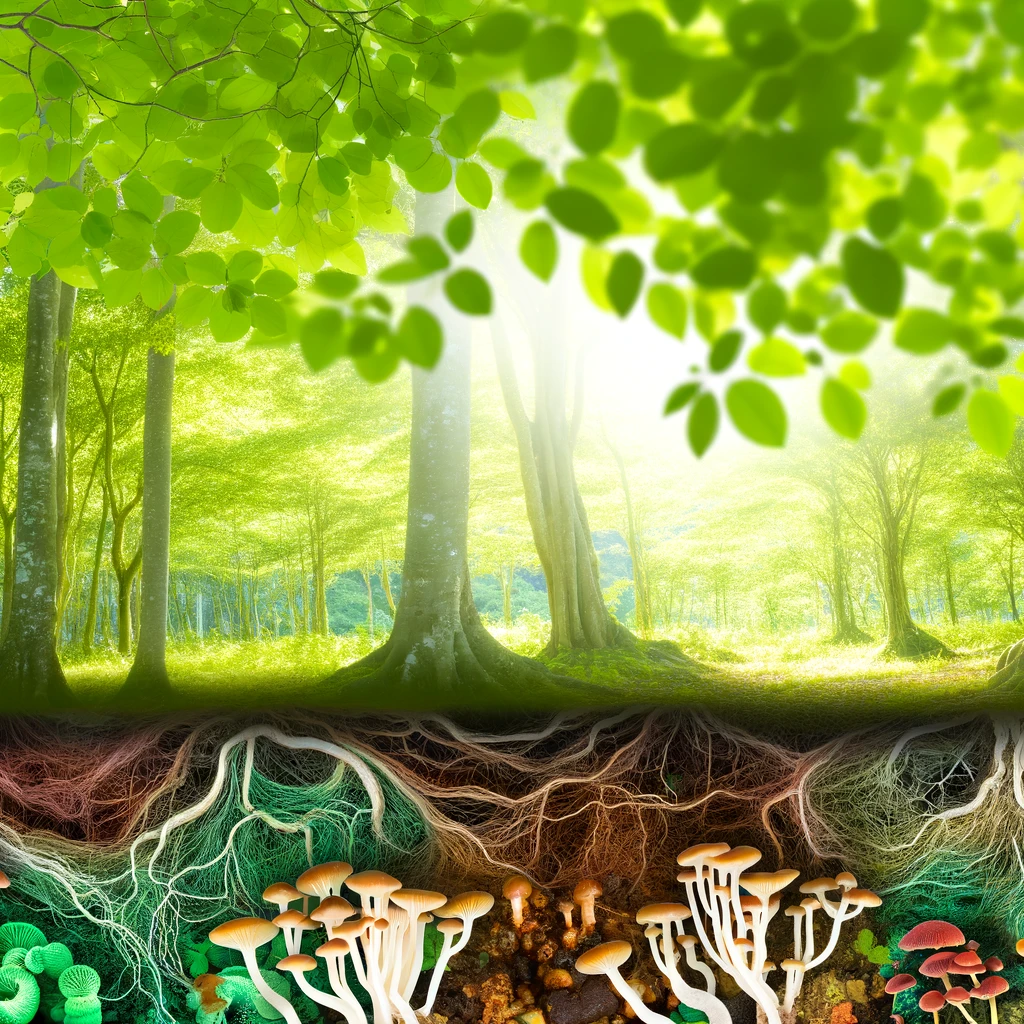
The Intricacies of Plant Communication: An Overview
Trees and plants have long been considered silent and passive entities, merely providing oxygen and beauty to our planet. However, recent research has unveiled a hidden world beneath the bark and leaves, where trees speak to each other in a language all their own. This intricate communication network not only enhances their survival but also plays a crucial role in the health of our ecosystems.
The Wood Wide Web: Understanding the Underground Network
At the heart of this communication lies the mycorrhizal network, often dubbed the “Wood Wide Web.” This underground system comprises fungal threads that connect the roots of different plants, facilitating the exchange of nutrients and information. Through this network, trees can share resources, warn of impending dangers, and even aid each other in distress.
Resource Sharing and Cooperation
One of the most fascinating aspects of the mycorrhizal network is its capacity for resource sharing. Trees in nutrient-rich areas can transfer essential nutrients to those in poorer soils, ensuring mutual growth and survival. This symbiotic relationship highlights a level of cooperation that challenges our understanding of competition in nature.
Defense Mechanisms: Warning Signals in the Forest
Trees are not only capable of sharing resources but are also adept at sending warning signals. When under attack by pests or diseases, they release chemical signals through the air and the mycorrhizal network. These signals alert neighboring trees to bolster their defenses, a process that underscores the importance of communication in survival.
Above the Canopy: The Role of Chemical Signals
Plant communication is not limited to the underground network. Above the canopy, trees emit volatile organic compounds (VOCs) that serve as airborne signals. These chemical messages can attract beneficial insects, deter herbivores, or even communicate with other species.
Altruism or Self-Preservation?
The altruistic behavior observed in plants raises intriguing questions about their motivations. While it may seem that trees act selflessly, the reality is more complex. By supporting the health of the forest, they are ultimately ensuring their own long-term survival. This delicate balance between altruism and self-preservation is a testament to the sophisticated strategies employed by plants.
The Implications of Plant Communication
Understanding the language of trees has profound implications for forestry, agriculture, and conservation efforts. By appreciating the complexities of plant communication, we can develop more sustainable practices that align with the natural processes of our ecosystems.
Conservation and Biodiversity
Conservation strategies can benefit from this knowledge by focusing on preserving the integrity of the mycorrhizal networks and the diverse plant species that rely on them. Maintaining biodiversity is crucial for a resilient ecosystem capable of adapting to changes and threats.
Innovations in Sustainable Agriculture
In agriculture, leveraging plant communication can lead to innovative practices that reduce the need for chemical fertilizers and pesticides. By fostering natural plant interactions, farmers can enhance crop resilience and yield.
Conclusion: A New Perspective on Plant Life
The discovery of plant communication reshapes our perception of trees and plants as dynamic, interactive beings. As we continue to explore this fascinating field, we gain insights that not only enhance our understanding of the natural world but also guide us toward more harmonious interactions with our environment. The language of trees, once hidden, is now a testament to the complexity and wonder of life on Earth.
Related Articles





